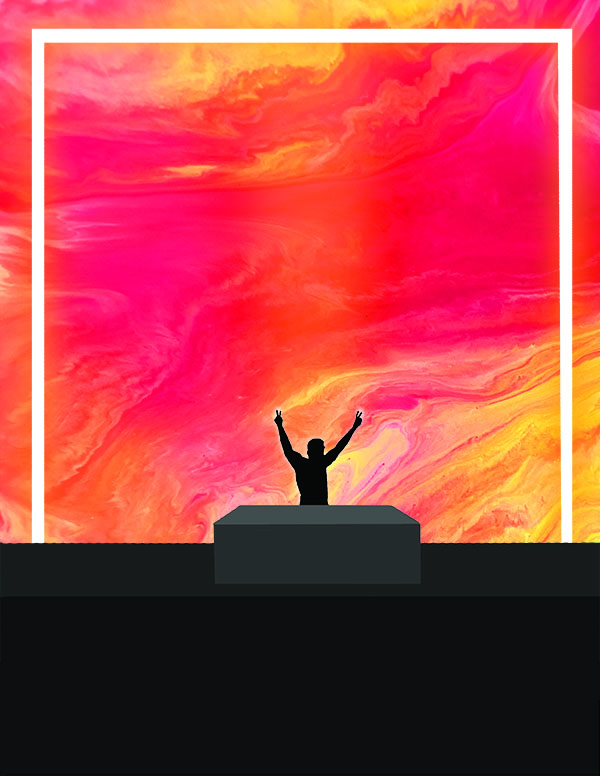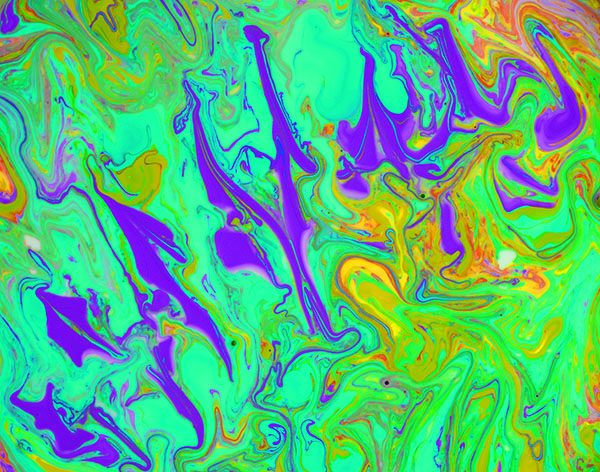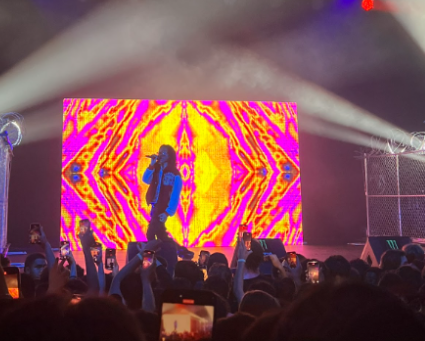A Look Into Sound
Though some enjoy listening to music in the confines of their bedroom, nothing compares to watching live performance, filled with dynamic visuals and dancing lights, indescribably connecting the audience and the performer.

Sweaty bodies pile together for miles, restless as they wait for the music to begin. Everything is black and the stage is momentarily silent. Suddenly, flashes of green and blue are projected on the many faces laying in wait for the performance to consume them. The crowd begins to roar as an ocean of pink and purple morph together into a futuristic formation on the once black screen. Flashes of yellow lights are in sync with the strong beats emanating from the speakers. Everything goes black again and the stage returns to silence. Subtle whispers from the crowd travel through the cold air. In a burst of light, color and sound, the stage comes alive again as abstract visuals fill the crowd’s eyes and music pours into their ears.
Since the ‘60s and ‘70s, when rock bands merely dabbled with simple projector lenses and smoke bombs, the art of the concert experience has developed into a multi-million dollar industry. Today, smoke bombs have pioneered pyrotechnics, projector lenses gave way to LED displays and concert stages have become an independent art form. While the sound experience of a concert is undoubtedly unique, contemporary visual effects create another dimension that compliments the audio, giving concert-goers a much enhanced experience. Through the ever-improving auditory — and now visual — stimulation, the concert experience is a platform for art that can evoke emotion through a multitude of senses beyond just sound.
Technology
Technologies have evidently progressed over the years, pushing forward many aspects of culture and providing many more mediums artists can employ. But even with these constant shifts in technology, the sole purpose of set design as a form of art has remained the same over time. This is the principle that captivating visuals and set designs serve to better connect the audience with the performers before them. Past the development of audio technology, the technology utilized in set design evokes a variety of emotions that the performer is trying to achieve through their music. Companies have been created in order to cater to these artists’ needs, designing the visual aspects of their performance. One of the most prominent companies that have filled this new field is Silent House. Silent House is the creative direction of the art, stage direction, live event production, scenic design and video content for some of today’s top performing artists, tours and television shows.
CEO and President Baz Halpin used to be a performer himself, touring with a band in Europe in the ‘90s. This, along with his first-hand experience with both the lighting and set design that accompanies a performance has pushed him into this industry.
Halpin has come to realize the importance of visuals and lighting, both big and small.
“You want to make sure that everyone is leaving entertained, that is the effect; you want people to be transported away,” Halpin said. Not only is it important for the audience to feel entertained, but Halpin also feels that visual art serves to add a another medium to the performance. “It’s theater, you are getting a visual interpretation of the narrative of the song, every song is a story and you are trying to tell a story with the visual to heighten the impact of the performance.”
Technological developments have been driving this industry, enhancing performances in ways that were never deemed to be possible. Because of them, visual design has shifted throughout the years and is now executed in an entirely new way. The multitude of programs coming into play makes it possible to produce such incredible sets. Some of the most commonly used are Adobe Illustrator and Cinema 4d, but there are a variety of others used to create and project images, videos and text onto large screens for the entirety of the audience to see.
Halpin has noticed this shift, saying, “Technology is constantly developing and changing, creating new possibilities and opportunities. Fundamentals have always stayed the same which is creating an environment that heightens the performance.”

Design
The design of a set and the visuals that go along with it are individualized to compliment the unique sonar experience.
ODESZA, a popular electronic pop band, is widely known for their incredible visual performances. They use massive LED tiles as a stage backdrop, projecting large, brightly-colored images and videos. These visuals tell a story throughout the concert, taking the audience on an intimate journey. In addition to screens, ODESZA uses lights and lasers that flash to the beat, creating a visually and audibly stunning concert experience.
Certain artists are known not only for their music, but also for their striking concert experiences. Big Gigantic, a hip hop and jazz duo, recently debuted the use of 3D visuals. Every member of the audience received 3D glasses upon arrival at the venue. During their performance, Big Gigantic gave the audience the queue to put the glasses on, and the main LED wall began projecting 3D images. This resulted in a truly immersive audio and visual experience, beyond the already impressive laser and light shows.
Other artists use technology as a medium of interaction with the audience, one of these being Portugal The Man. The band projects a series of texts onto their giant LED backdrop, posing questions or previewing songs to be played later in the concert, as if they are communicating with their audience. Although the audience cannot actually speak to the performers, it is a method of strengthening the connection between them.
While technology has allowed for compelling digital visuals, physical set building still plays a key role in the overall visuals. Glass Animals, an English indie rock band, makes use of palm trees and a giant disco ball in the shape of a pineapple on their stages, which gives their performance a fun, alternative vibe.
Even though technology is changing and enabling increasingly more efficient ways to create visual art, the meaning behind the art has remained the same — and always will. Its power provides entertainment to audiences and creates a special, unreplicable connection with the music that is being performed. Whether the set design is made up of physical art pieces on the stage or LED lights and interactive videos being displayed on a variety of screens, it creates a bond between the audience and the performer that is only captivated when one experiences it themselves. Going to a performance is an intimate, magical experience, providing indescribable entertainment for the viewer.
Photos by Ryan Gwyne
Art by Claire Moley






